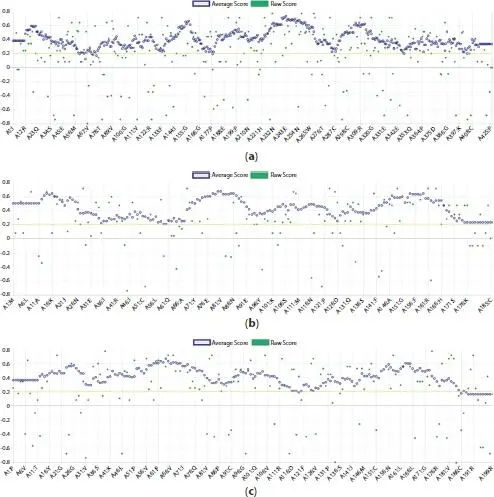The Internet of Medical Things (IoMT)
Здесь есть возможность читать онлайн «The Internet of Medical Things (IoMT)» — ознакомительный отрывок электронной книги совершенно бесплатно, а после прочтения отрывка купить полную версию. В некоторых случаях можно слушать аудио, скачать через торрент в формате fb2 и присутствует краткое содержание. Жанр: unrecognised, на английском языке. Описание произведения, (предисловие) а так же отзывы посетителей доступны на портале библиотеки ЛибКат.
- Название:The Internet of Medical Things (IoMT)
- Автор:
- Жанр:
- Год:неизвестен
- ISBN:нет данных
- Рейтинг книги:3 / 5. Голосов: 1
-
Избранное:Добавить в избранное
- Отзывы:
-
Ваша оценка:
- 60
- 1
- 2
- 3
- 4
- 5
The Internet of Medical Things (IoMT): краткое содержание, описание и аннотация
Предлагаем к чтению аннотацию, описание, краткое содержание или предисловие (зависит от того, что написал сам автор книги «The Internet of Medical Things (IoMT)»). Если вы не нашли необходимую информацию о книге — напишите в комментариях, мы постараемся отыскать её.
Providing an essential addition to the reference material available in the field of IoMT, this timely publication covers a range of applied research on healthcare, biomedical data mining, and the security and privacy of health records.
The Internet of Medical Things (IoMT) — читать онлайн ознакомительный отрывок
Ниже представлен текст книги, разбитый по страницам. Система сохранения места последней прочитанной страницы, позволяет с удобством читать онлайн бесплатно книгу «The Internet of Medical Things (IoMT)», без необходимости каждый раз заново искать на чём Вы остановились. Поставьте закладку, и сможете в любой момент перейти на страницу, на которой закончили чтение.
Интервал:
Закладка:
Figure 1.3 ERRAT plots for (a) EGFR, (b) K-ras oncogene protein, and (c) TP53.
1.3.4 Identification of Active Sites
For EGFR, K-ras oncogene protein, and TP53, the BSP-Slim server was used to obtain the active site protein volume and the residues that form an active site pocket (Table 1.6). The protein volume for EGFR, K-ras, and TP53 were 837 A 3, 718A 3, and 647A 3, respectively.
1.3.5 Target Protein-Ligand Docking
Based on Murugesan et al . study [30], the plant compounds from methanolic leaf extract of Vitexnegundo weredocked successfully with cyclooxy-genase-2 (COX-2) enzyme. The phytocompounds had a better interaction compared with aspirin and ibuprofen. They had a good binding energy and docking result.

Figure 1.4 Verify 3D plots for (a) EGFR, (b) K-ras oncogene protein, and (c) TP53.
Besides that, four components [1,3-Dioxolane, 2-(3-bromo-5,5,5-trichloro-2,2-dimethylpentyl)-, Butanoic acid, 2-hydroxy-2-methyl-methyl ester, DL-3,4-Dimethyl-3,4-hexanediol, and Pantolactone] from Moringaconcanensis had good binding affinity with brain cancer receptors. The binding energies were –3.90, –2.75, –3.05, and –4.15 kcal/mol. They had the lowest binding energies [31].
According to Deepa et al . study, plant compounds from the ethanolic leaf extract of VitexNegundo [(4S)-2-Methyl-2-phenylpentane-1,4-diol, 7-Methoxy-2,3-dihydro-2-phenyl-4-quinolone, 3-(tert-Butoxycarbonyl)-6-(3-benzoylprop-2-yl)phenol, (3R,4S)-4-(methylamino)-1-phenylpent-1-en-3-ol, and (2S,1’S)-1-Benzyl-2-[1’-(dibenzylamino) ethyl]aziridine] were docked with glucosamine 6 phosphatase synthase. They had the lowest and most negative value for binding energy (-36.53, –33.57, –35.90, –33.88, and –37.65 kcal/mol) [32].
Table 1.6Predicted active sites of the EGFR, K-ras oncogene protein, and TP53.
| Protein | Volume | Residues that forming pocket |
| EGFR | 837 | GLY100, ALA 101, ASP102, SER103, TYR104, GLU105, MET106, GLU107, GLU108, LYS113, LYS115, LYS 116, CYS117, GLU118, GLY119, PRO120, CYS121, ARG122, LYS123, VAL124, ASN149, THR151, SER152, SER154, THR185, LYS187, GLU188, THR190, ASN210, GLU212, ILE213, ARG215, LYS242, CYS99 |
| K-ras oncogene protein | 718 | GLY10, ALA11, CYS12, GLY13, VAL14, GLY15, LYS16, ASP33, PRO34, THR35, GLU37, LEU56, ASP57, THR58, ALA59, GLY60, GLN61, GLU62, GLU63, SER65, ARG68, MET72, ALA83, ASN86, LYS88, SER89, GLU91, ASP92, ILE93, HIE94, HIE95, TYR96, ARG97, GLU98, GLN99, ILE100, ARG102, VAL103 |
| TP53 | 647 | GLU107, ASN109, THR11, PRO128, TYR129, GLN13, GLU130, PRO131, PRO132, GLU133, VAL134, GLY135, SER136, ASP137, CYS138, THR139, THR140, ILE141, HIE142, TYR143, TYR16, GLY17, ASN177, SER178, PHE18, ARG19, LEU20, GLY21, PHE22, LEU23, HIE24, TYR35, ASN40, MET42, THR49, CYS50, PRO51, GLN53, LEU54, TRP55, VAL56, ASP57, THR59, PRO60, PRO61, THR64 |
According to Kasilingam and Elengoe study, apigenin successfully docked with p53, caspase-3, and MADCAM1 using BSP-Slim server. Apigenin was the plant compound while p53, caspase-3, and MADCAM1 were the target proteins in lung cancer cell line. Apigenin bound strongly with p53, caspase-3, and MADCAM1 at the lowest binding energies (4.611, 5.750, and 5.307 kcal/mol, respectively) [33].
Based on Ashwini et al . study, coumarin, camptothecin, epigallocate-chin, quercetin, and gallic acid were screened for potential binding with caspase-3 (target protein) in human cervical cancer cell line (HeLa). Coumarin had the strongest interaction with caspase-3 at the lowest binding affinity (–378.3 kJ/mol). Therefore, it could be a potential anti-cancer drug. However, gallic acid had the least interaction with caspase-3 at the lowest binding energy (–181.3 kJ/mol). The docking approach was carried out using Hex 8.0.0 docking software [34].
Chakrabarty et al . study demonstrated that 1-hexanol and 1-octen-3-ol suppressed the enzyme activity of Ach (PDB id: 2CKM) and BACE1 (PDB id: 4IVT). Ach and BACE1 are the proteins responsible for Alzheimer disease. 1-hexanol and 1-octen-3-ol were the plant compounds derived from leaf extract of Lantana Camera (L.) . Glide Standard Precision (SP) ligand docking was performed to determine the binding energy. The results show that 1-hexanol and 1-octen-3-ol bound strongly with Ach at –2.291 and –2.465 kJ/mol, respectively. Whereas, 1-hexanol and 1-octen-3-ol had the lowest binding affinity with BACE 1 at –0.948 and –1.267 kJ/mol, respectively. 1-octen-3-ol may have the potential to be an effective drug against Alzhemeir disease. It had the best interaction with both enzymes (Ach and BACE1) when compared with 1-hexanol [35].
Based on Supramaniam and Elengoe study, glycyrrhizin successfully docked with p53, NF-kB-p105, and MADCAM1 using BSP-Slim server. Glycyrrhizin was the plant compound while p53, NF-kB-p105, and MADCAM1 were the target proteins in breast cancer cell line. Glycyrrhizin bound strongly with p53, NF-kB-p105, and MADCAM1 at the lowest binding affinities (-4.040, –5.127, and –5.251 kcal/mol, respectively). Therefore, glycyrrhizin could be a potential drug in breast cancer treatment [36].
According to Elengoe and Sebestian study, p53, adenomatous polyposis coli (APC), and EGFR were generated using homology modeling approach. These proteins were the target proteins. They were docked successfully with plant compounds such as allicin, epigallocatechin-3-gallate, and gingerol. Plant compounds were used as ligands in docking process. p53 had the most stable interaction with the allicin among the three target proteins. p53 docked with allicin at the lowest binding energy of 4.968. However, the other target proteins had the good docking score too [37].
In this study, EGFR is successfully docked with quercetin, curcumin, and ellagic acid by using the BSP-Slim server. The same target protein-phytocompound complex docking method was repeated with K-ras oncogene protein and TP53. Furthermore, the most suitable docking complex was selected based on the lowest binding energy (D Gbind). Results of docking showed that EGFR had a strong bond with ellagic acid since it was the most favorable with the lowest energy value (–2.892 kcal/mol) when compared to curcumin and quercetin (Table 1.7). In addition, there was strong interaction between K-ras oncogene protein and quercetin with lowest energy (–1.154 kcal/mol) that was most favorable when compared to curcumin and ellagic acid. In addition, the strongest interaction for TP53 was with quercetin when compared to other two compounds with lowest energy (0.809 kcal/mol) according to the docking analysis.
Table 1.7Docking result of the EGFR, K-ras oncogene protein, and TP53.
| Protein | Compounds | Binding energy (kcal/mol) |
| EGFR | Curcumin | 5.320 |
| Ellagic acid | –2.892 | |
| Quercetin | –1.249 | |
| K-ras oncogene protein | Curcumin | 2.730 |
| Ellagic acid | 0.921 | |
| Quercetin | –1.154 | |
| TP53 | Curcumin | 1.633 |
| Ellagic acid | 0.054 | |
| Quercetin | –0.809 |
1.4 Conclusion
In a nutshell, EGFR was successfully docked with curcumin, ellagic acid, and quercetin. Besides that, the same approach of docking simulation was performed for K-ras oncogene protein and TP53. Among the three protein models, EGFR had a strong interaction with ellagic acid due to the lowest energy value while K-ras oncogene protein and TP53 had a strong interaction with quercetin as the binding energy was the lowest. Consequently, result from this study will aid in designing a suitable structure-based drug. However, wet lab must be carried out to verify the results of this study.
Читать дальшеИнтервал:
Закладка:
Похожие книги на «The Internet of Medical Things (IoMT)»
Представляем Вашему вниманию похожие книги на «The Internet of Medical Things (IoMT)» списком для выбора. Мы отобрали схожую по названию и смыслу литературу в надежде предоставить читателям больше вариантов отыскать новые, интересные, ещё непрочитанные произведения.
Обсуждение, отзывы о книге «The Internet of Medical Things (IoMT)» и просто собственные мнения читателей. Оставьте ваши комментарии, напишите, что Вы думаете о произведении, его смысле или главных героях. Укажите что конкретно понравилось, а что нет, и почему Вы так считаете.












